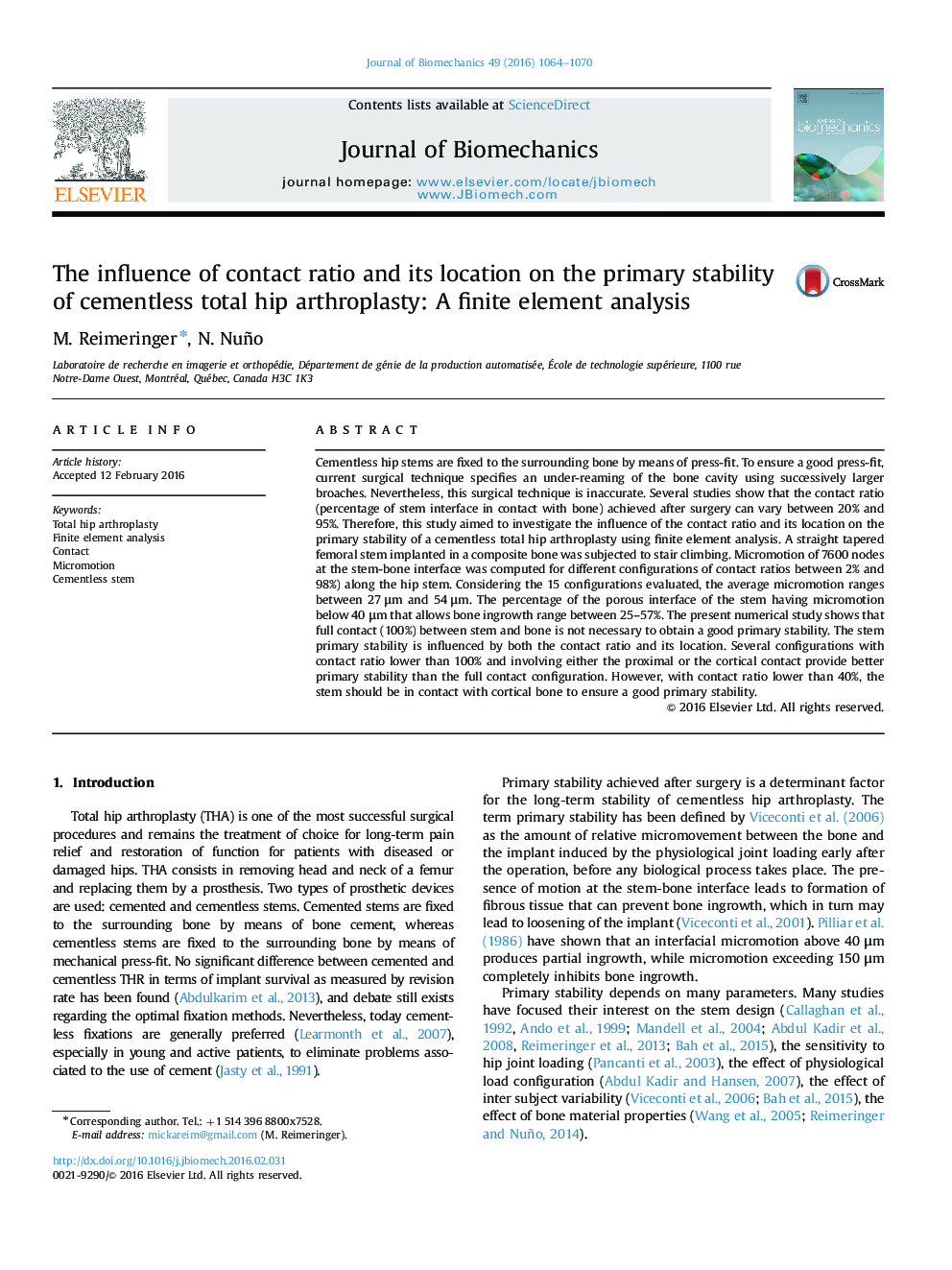| Article ID | Journal | Published Year | Pages | File Type |
|---|---|---|---|---|
| 871822 | Journal of Biomechanics | 2016 | 7 Pages |
Cementless hip stems are fixed to the surrounding bone by means of press-fit. To ensure a good press-fit, current surgical technique specifies an under-reaming of the bone cavity using successively larger broaches. Nevertheless, this surgical technique is inaccurate. Several studies show that the contact ratio (percentage of stem interface in contact with bone) achieved after surgery can vary between 20% and 95%. Therefore, this study aimed to investigate the influence of the contact ratio and its location on the primary stability of a cementless total hip arthroplasty using finite element analysis. A straight tapered femoral stem implanted in a composite bone was subjected to stair climbing. Micromotion of 7600 nodes at the stem-bone interface was computed for different configurations of contact ratios between 2% and 98%) along the hip stem. Considering the 15 configurations evaluated, the average micromotion ranges between 27 μm and 54 μm. The percentage of the porous interface of the stem having micromotion below 40 μm that allows bone ingrowth range between 25–57%. The present numerical study shows that full contact (100%) between stem and bone is not necessary to obtain a good primary stability. The stem primary stability is influenced by both the contact ratio and its location. Several configurations with contact ratio lower than 100% and involving either the proximal or the cortical contact provide better primary stability than the full contact configuration. However, with contact ratio lower than 40%, the stem should be in contact with cortical bone to ensure a good primary stability.
